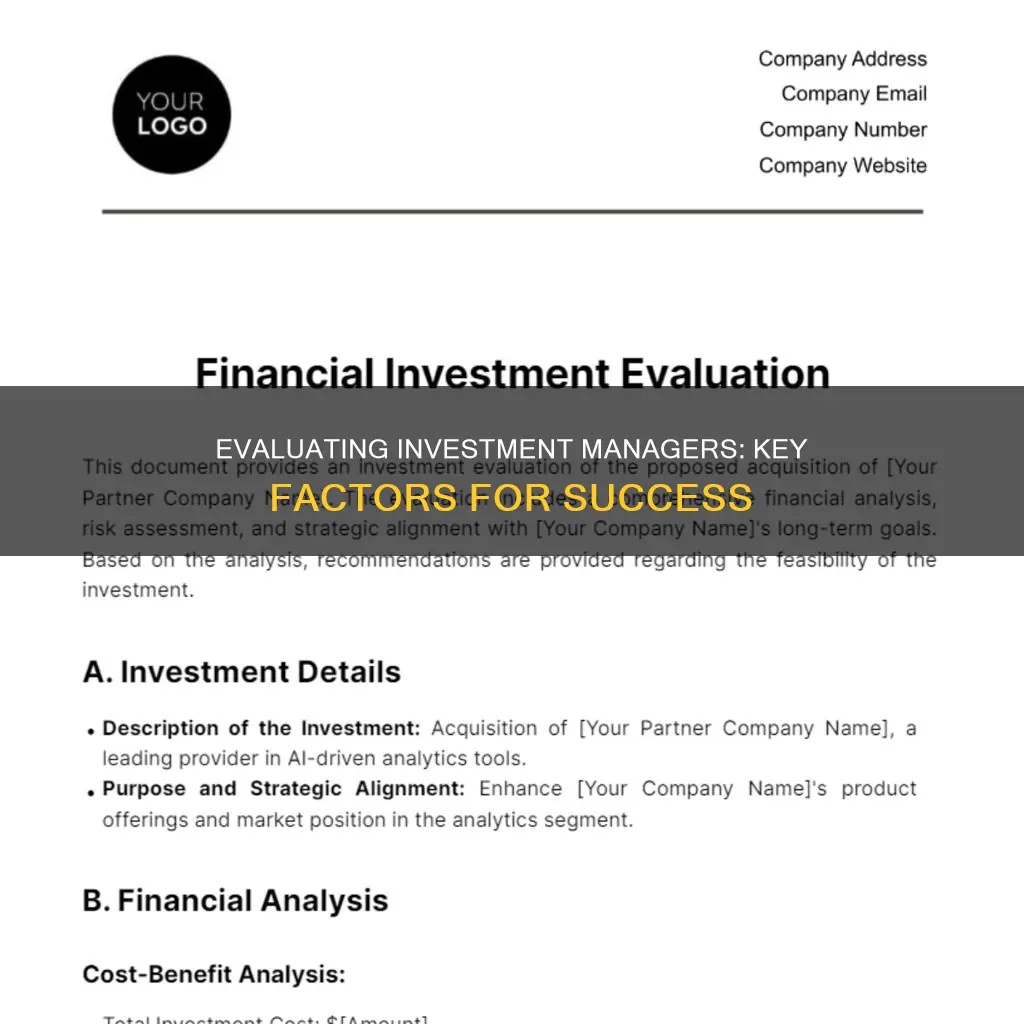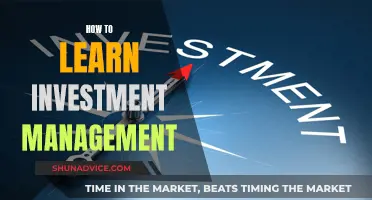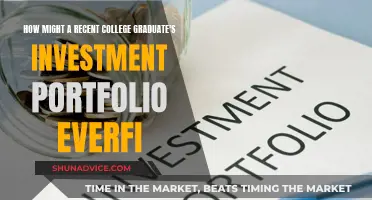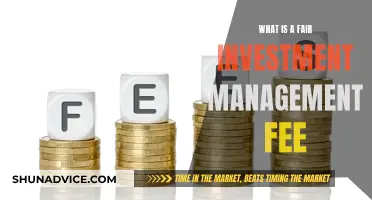
Evaluating an investment manager is a complex process that involves more than just analysing investment returns. It is crucial to conduct due diligence, which involves understanding how the investment results were achieved and assessing the likelihood of the manager continuing to follow the same process. This includes evaluating the firm's integrity, operations, personnel, vehicle structure, and terms. Both qualitative and quantitative analyses are essential, with the former focusing on the manager's investment process, investment personnel, portfolio construction, and infrastructure, while the latter helps connect the dots between what the manager says and their actions. Key financial metrics such as period return, benchmark return, active return, standard deviation, beta, and various ratios (Sharpe, Roy's Safety-First, Sortino, Treynor, and Information) are used to assess the manager's performance. Additionally, it is important to consider the manager's investment philosophy, certifications, and communication methods to ensure they align with your financial goals and situation.
What You'll Learn

Evaluate their qualifications and certifications
When evaluating an investment manager's qualifications and certifications, it is essential to ensure they meet specific criteria and possess relevant expertise. Here are some detailed guidelines to help you through this process:
Firstly, it is imperative that the investment manager is registered with a reputable investment authority. This registration provides credibility and ensures they are operating within the boundaries of regulatory requirements. Without this registration, they may not be authorised to provide investment advice or manage client assets. Be sure to verify their registration status directly with the relevant authority to ensure it is valid and up to date.
Secondly, seek out managers with certifications in the field of investment. A well-recognised certification is the Chartered Financial Analyst (CFA) qualification. Holding this certification demonstrates a strong foundation in investment knowledge and a commitment to ethical and professional standards. It indicates that the manager has undergone rigorous training and evaluation to attain this designation. Other relevant certifications to look for include the Certified Financial Planner (CFP) designation, which signifies expertise in holistic financial planning, or the Chartered Alternative Investment Analyst (CAIA) charter, specialising in alternative investments. These certifications provide a solid framework for effective investment management.
Additionally, consider the investment manager's educational background. While not mandatory, a degree in finance, economics, business, or a related field can indicate a strong theoretical understanding of investment concepts. This academic foundation can enhance their practical skills and demonstrate a well-rounded knowledge base. It is also beneficial to look for managers who actively engage in continuing education. This commitment to lifelong learning ensures they stay abreast of industry developments and can provide the most current strategies and insights to their clients.
Furthermore, evaluate the investment manager's track record and experience. Seek out individuals with a proven history of successful investment decisions and client satisfaction. Look for consistency in their performance and inquire about their strategies during favourable and unfavourable market conditions. A qualified investment manager should be able to articulate their approach, including any adjustments made following significant market events. Their ability to adapt their strategies and learn from past experiences is a strong indicator of their qualifications.
Lastly, consider the investment manager's specialisations and whether they align with your financial goals. Different managers may have different areas of expertise, such as global bonds, mutual funds, digital assets, or equity stocks. Selecting a manager whose specialisation matches your investment objectives ensures a focused and tailored approach to managing your portfolio. Their qualifications and certifications in these specific areas will enhance their ability to provide effective guidance and make informed decisions regarding your financial future.
Remember, evaluating an investment manager's qualifications and certifications is just one aspect of the selection process. It is also essential to consider their investment philosophy, risk management strategies, performance metrics, and communication approach to make a well-informed decision.
The Investment Management Industry: Size and Scope Explored
You may want to see also

Assess their investment philosophy and risk appetite
When evaluating an investment manager, it is crucial to assess their investment philosophy and risk appetite to ensure alignment with your financial goals and tolerance for risk. Here are some detailed paragraphs to guide you through this assessment process:
Understanding Investment Philosophy
An investment manager's philosophy forms the foundation of their decision-making process. It outlines their assumptions about the factors driving investment performance and their beliefs about exploiting these sources of return. A clear and concise investment philosophy is essential. Evaluating these assumptions helps you understand how their strategy will perform over time and across different market conditions. For example, a manager who believes in speculative investments and penny stocks may not be suitable for a risk-averse client or someone nearing retirement who prioritises stability. Therefore, it is imperative to ensure that the investment manager's philosophy aligns with your financial objectives and circumstances.
Evaluating Risk Appetite and Tolerance
Understanding an investment manager's risk appetite is critical. This involves assessing their sensitivity to market movements and the types of investments they favour. A common metric used to evaluate risk is the "beta." A beta of 1 indicates that an investment moves in tandem with the market benchmark. A beta above 1 suggests higher volatility, while a beta below 1 indicates lower volatility. Additionally, the standard deviation of returns is another metric to consider, as it measures the volatility of returns relative to the average. A higher standard deviation signifies greater risk due to more significant fluctuations.
Assessing Risk-Adjusted Performance
When evaluating an investment manager's performance, it is essential to consider the level of risk they take. This is where metrics like the Sharpe ratio, Roy's safety-first ratio, and the Sortino ratio come into play. These ratios help compare the returns generated by the manager relative to a benchmark, such as the risk-free rate or a target return, while accounting for the risk undertaken. A higher ratio indicates superior risk-adjusted performance, suggesting that the manager is effectively managing risk to produce desirable returns.
Due Diligence and Manager Selection
Conducting due diligence involves a comprehensive analysis of the investment manager's processes, personnel, and infrastructure. It is crucial to evaluate their investment process, the expertise and experience of their team, and the consistency of their investment strategy. Additionally, understanding their investment personnel's culture, history, and management approach can provide valuable context for their performance. This qualitative analysis, combined with a quantitative evaluation of risk and return patterns, helps set realistic expectations and increases the cohesion of your investment strategy.
In summary, assessing an investment manager's investment philosophy and risk appetite requires a thorough evaluation of their decision-making framework, risk tolerance, and performance while considering the level of risk undertaken. This process ensures that their approach aligns with your financial goals and risk tolerance, ultimately contributing to more informed decision-making.
Recession-Proofing Your Investment Portfolio: Strategies for Success
You may want to see also

Understand their investment process and due diligence
Understanding an investment manager's process and conducting due diligence are critical steps in evaluating their suitability. This involves a detailed analysis of their investment strategy, risk management, performance, and operational due diligence.
Firstly, understanding an investment manager's process entails evaluating their investment philosophy and decision-making process. This includes assessing their investment strategy, the types of investments they focus on, and their level of expertise in those areas. For example, a manager who believes in speculative investments and penny stocks may not be suitable for a client seeking stability. It is also important to evaluate the consistency of their investment process over time and across different market environments.
Secondly, due diligence involves a thorough investigation of the investment manager's operations, integrity, and personnel. This includes assessing the manager's infrastructure, team culture, and the depth of their team's expertise. Meeting or surveying the manager can provide valuable insights into their approach and the history of their strategy. It is also essential to evaluate the manager's risk management process, including their ability to identify, monitor, and mitigate risks associated with their investment strategy.
Additionally, due diligence entails analysing the manager's performance and track record. This includes evaluating risk-adjusted returns, such as the Sharpe ratio, Sortino ratio, and Treynor ratio, to assess the manager's performance relative to the risk taken. It is also crucial to compare the manager's returns to relevant benchmark indexes to determine if their active management provides added value compared to passive investment alternatives.
Furthermore, due diligence should include an evaluation of fees and costs associated with the investment manager's services. Even small differences in fees can have a significant impact on long-term returns due to compounding. It is essential to understand the fee structure, including management fees, performance fees, and any other costs, to assess their impact on overall investment returns.
Finally, it is important to consider the investment manager's regulatory and compliance framework. This includes verifying their registration with relevant investment authorities and their certifications to ensure they meet the required standards and can provide the necessary level of service.
By conducting a comprehensive evaluation of an investment manager's process and due diligence, investors can make more informed decisions and better understand the potential risks and returns associated with their services.
Portfolio Optimization: Strategies for Maximizing Returns
You may want to see also

Compare fees and their impact on long-term returns
Section## Compare fees and their impact on long-term returns
Fees are a crucial aspect of evaluating an investment manager as they directly impact your long-term returns. Even seemingly small fees can compound over time, significantly affecting your overall returns. For example, a 1% annual fee may seem negligible in the short term, but it reduces the amount of money invested, leading to lower compounded returns year after year.
When comparing fees, it's important to understand the different types of fee structures investment managers employ. Some common fee types include:
- Fixed percentage fee: This is typically calculated as a percentage of the total assets under management. For example, a manager may charge 1% of the total portfolio value annually.
- Performance-based fee: This type of fee charges a percentage of the portfolio's total return or the excess return over a specific benchmark. For instance, a manager might charge 20% of any returns that exceed the benchmark return.
- Hybrid fee: Some investment managers combine the above two structures, charging a base fixed fee along with a performance-based fee for returns above a certain threshold.
When evaluating fees, it's important to consider the potential trade-off between cost and value. A more expensive investment manager may provide superior returns or specialised services that justify the higher fees. On the other hand, a lower-cost option might offer comparable or better returns, especially when considering passive investment strategies that aim to replicate market benchmarks.
Additionally, it's worth noting that certain investment products or services may come with additional fees. For example, an investment manager may charge a transaction fee for buying or selling assets, or there might be fees associated with specific investment funds or products. Understanding all applicable fees is essential to make an informed decision and ensure there are no unexpected costs eroding your long-term returns.
By carefully evaluating and comparing fee structures, you can make a more informed decision about which investment manager is the best fit for your financial goals and risk tolerance, ensuring your long-term returns are maximised.
Investment Managers' Compensation Strategies in Private Equity
You may want to see also

Analyse their performance and risk-adjusted returns
Evaluating an investment manager's performance and risk-adjusted returns is a critical part of investment portfolio due diligence. It involves analysing various financial metrics and ratios to assess the manager's ability to generate returns while effectively managing risk. Here are some key aspects to consider when evaluating an investment manager's performance and risk-adjusted returns:
Period Return:
This metric measures the return generated by an investment or portfolio over a specific period. It reflects the amount of value gained or lost during that time interval. By calculating the period return, investors can assess the absolute performance of their investments.
Benchmark Return:
The benchmark return measures the performance of a comparable index or passive investment strategy over the same period. For example, comparing the return of a Canadian stock portfolio to the S&P/TSX 60 Index ETF. This helps determine if the active management provided by the investment manager is adding value compared to simply following the market index.
Active Return:
Active return is calculated as the difference between an investment's return and the benchmark return. A positive active return indicates that the investment manager has outperformed the benchmark, while a negative active return suggests underperformance. This metric is crucial for evaluating the added value brought by the investment manager's expertise.
Standard Deviation:
Standard deviation measures the volatility or risk associated with an investment's returns. A higher standard deviation implies greater risk, as the returns deviate more significantly from the average. By considering this metric, investors can assess how much the returns fluctuate and make informed decisions about their risk tolerance.
Beta:
Beta measures the sensitivity of an investment's returns to market movements. A beta of 1 indicates that the investment moves in line with the market. A beta above 1 suggests higher volatility, while a beta below 1 indicates lower volatility. Evaluating beta helps investors understand how their investments respond to market changes.
Sharpe Ratio:
The Sharpe ratio is a commonly used risk-adjusted return metric. It calculates the excess return of an investment over a risk-free rate, standardised by the standard deviation of the excess returns. A higher Sharpe ratio indicates superior risk-adjusted performance, as it reflects the amount of return generated per unit of risk taken.
Information Ratio:
The information ratio is similar to the Sharpe ratio but focuses on comparing an investment's risk-adjusted return relative to a benchmark. It provides insight into how well an investment manager is performing compared to a specific benchmark. A higher information ratio indicates better performance against the chosen benchmark.
Other Ratios:
There are several other ratios that can be used to evaluate risk-adjusted returns, such as Roy's Safety-First Ratio, the Sortino ratio, the Treynor ratio, and the Information Ratio. These ratios consider factors like target returns, downside volatility, market risk, and active returns to provide a more comprehensive understanding of an investment manager's performance.
By analysing these metrics and ratios, investors can gain a deeper understanding of an investment manager's performance and risk-adjusted returns. This evaluation process helps set expectations, reduce uncertainty, and make more informed decisions about their investment strategies.
Auditing Your Investment Portfolio: A Comprehensive Guide
You may want to see also
Frequently asked questions
The first step is to establish your investment objectives. For example, are you looking for exposure to global bonds or a market-neutral mutual fund? Once you know what you want to achieve, you can start looking for managers who can provide those exposures.
Due diligence is the investigation and analysis that supports an investment action, decision, or recommendation. It is a critical part of the manager selection process, helping to align expectations and reduce uncertainty. Due diligence involves both qualitative and quantitative analysis.
Some essential metrics to focus on include Period Return, Benchmark Return, Active Return, Standard Deviation, Beta, Sharpe Ratio, and Information Ratio. These metrics help assess the return generated by an investment or portfolio and its volatility, sensitivity to market movements, and risk-adjusted return.
It is important to ask questions about their investment philosophy and whether it aligns with your financial situation and goals. You should also inquire about their qualifications, such as their registration with an investment authority and any certifications they hold. Additionally, ask about their communication frequency, the number of clients they manage, their commission structure, and any fees or penalties associated with withdrawing your money.







